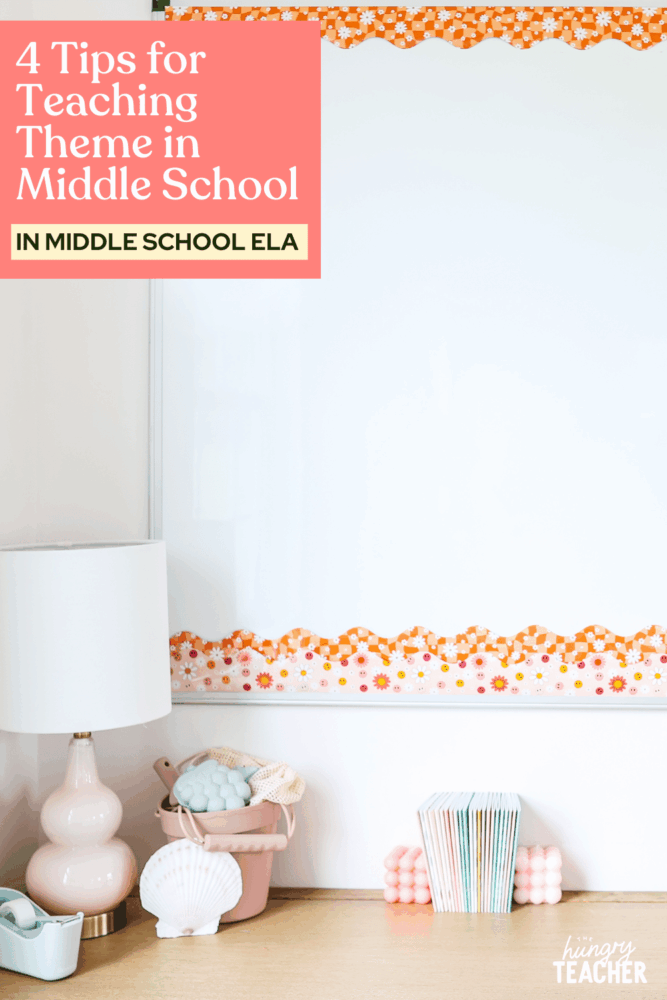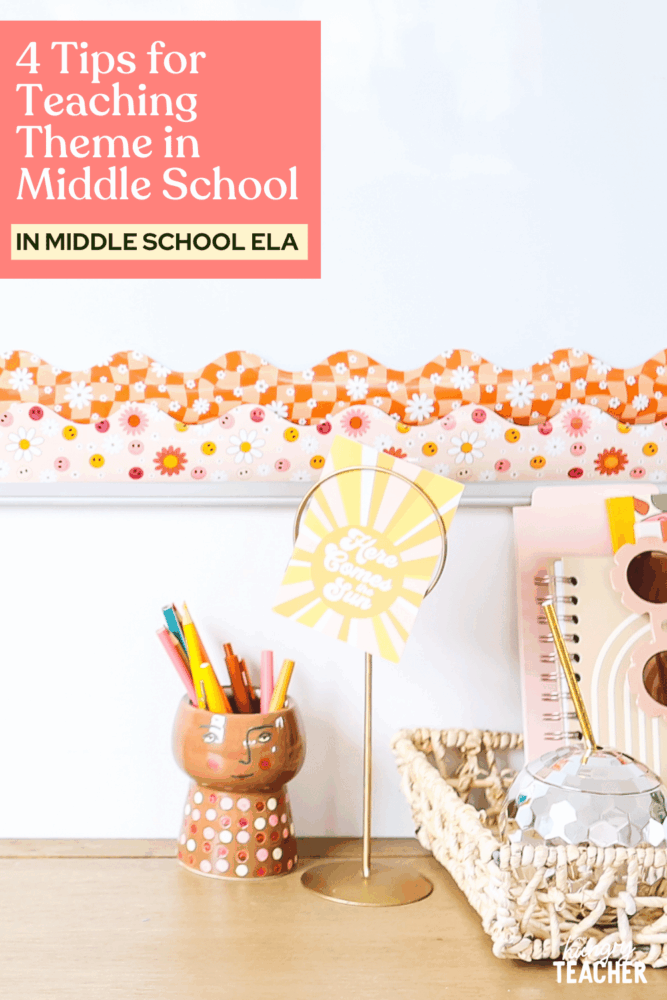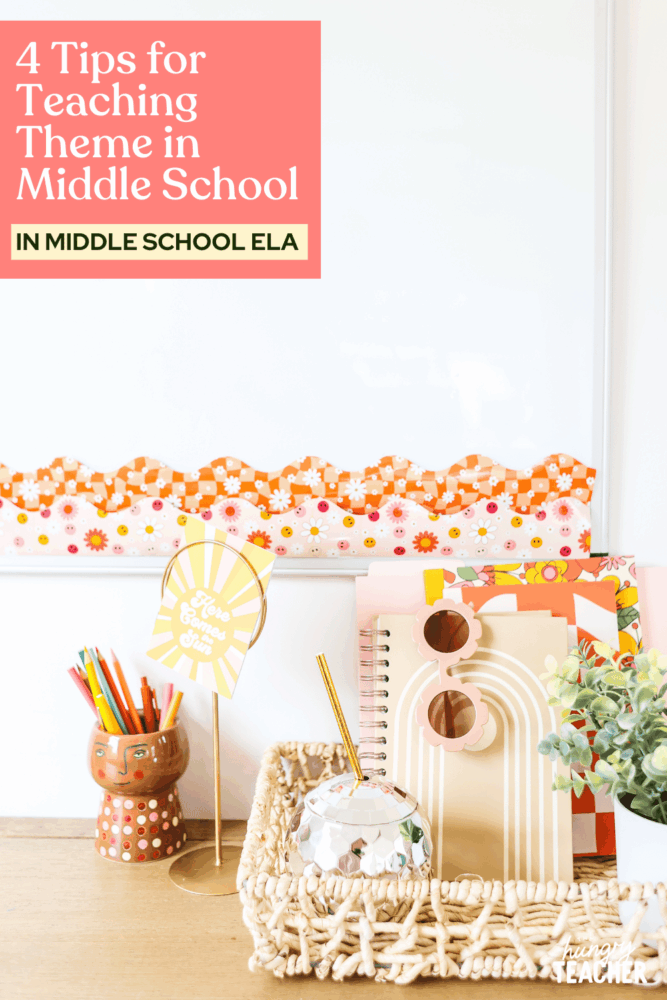hey friend!
I'm Martina.
I provide practical, time-saving strategies that actually work—so you can engage your students, teach effectively, and reclaim your time from the exhausting planning-grading cycle.
Browse Our ELA Resources
4 Tips for Teaching Theme in Middle School
A few years ago, I had one of those moments in the middle of a reading lesson where you think, “I am really not explaining this right.” My middle school students kept shouting out all the wrong answers, and I was trying to guide them towards the goal – without simply giving the answer away. Have you ever been there?
It was during that lesson that my middle schoolers were learning about theme. For me, as the teacher, theme is a pretty simple concept that my brain can easily wrap around. For my students however, having to dig deep and think beyond the text is a skill they are often still mastering.
So, how can you get your middle school students to grasp theme? How can you teach them to think critically and use those oh-so important inferencing skills?

Tip #2: Start with a Topic
To guide students to theme, it is sometimes best to have them start with a topic. Some students may want to jump straight into the theme, but if they are struggling at all with defining the message, encourage them to start with the topic. A topic is a main idea, conflict, or characteristic they see in the story. A topic is only one word, and doesn’t yet give us any details on the moral or message of the story.
Students can uncover topics by thinking about a few questions:
- What are the key ideas in the text?
- What is the main conflict or problem in the story?
- What characteristics or qualities does the main character display?
For example, if students were to think of topics for Cinderella, they may come up with the following: love, acceptance, family, fairness, or bravery. These can all be traced back to the story of Cinderella in some way.
Have students make a large list of these topics. They will then use them to create a theme. (P.S. If your students are struggling, give them a list of random topics. Have them choose the ones that relate to the text they are reading.)

Tip #3: Construct a Theme
After students have come up with a list of topics, then they can create a theme. The idea is that by starting with a list of topics, students have a place to begin to critically think. Essentially, we have narrowed down their thought process.
Instruct students to look at their topics and ask the following questions:
- What message is the author giving me about this topic?
- What did I learn about this topic from the text?
- What moral or message can I take away from this topic?
Encourage students to think beyond the text and use critical thinking. For example, with Cinderella, students would not want to say a theme is the family treated her badly. This would be an explanation of events that occurred in the story, not a theme. Help students understand that a theme should not reference events from the story but make an inference.
Let’s look at the Cinderella example again. Here are a few themes you could gather from the topics we chose.
- Love can help you overcome struggles.
- Being brave can lead to amazing opportunities.
- Life is not always fair.
If you want a list of themes and theme statements, you can download my FREE Literary Analysis Reference Booklet here. It has a full page of themes for students to use and this booklet can be used all year long.
Tip #4: Dig Deeper with Analysis
Once students have gotten the hang of theme, it is time to move even further into analysis. Literary analysis is a great way for students to expand on their critical thinking because they must prove how they came up with the theme using textual evidence and analysis. When you first begin writing literary analysis of theme, have students craft one to two paragraphs.
You want to guide students through the literary analysis by providing some sort of rubric or outline for what they should include. Here are the expectations I give my students for analysis writing:
- State the theme of the story and why you believe it is the theme.
- Provide text evidence and analysis to support the theme you have determined.
- When citing evidence, put the author’s last name and the page number inside parentheses after you quote the text
Before writing, it is also best to give your students an example of what a literary analysis for theme might look like. You can break down this example together using the expectations you have set, so students have an idea of how to write.
Want your students to write a theme literary analysis, but not sure where to start? I have all of the resources you need to take your students from struggling to critical thinkers.
In this literary analysis unit, we will explore topics such as theme, author’s craft, symbolism, and more. This unit comes with lessons plans, printables for students, and exemplars to model with students. Grab the resource here.

Want a sneak peek at teaching The Hungry Teacher way—with support, structure, and strategy?
When you join the waitlist for The Hungry Teacher’s Hub membership, you get three free classroom-ready resources: a theme unit, an expository writing unit, and a grammar unit introducing mentor sentences. Plus, you’ll get immediate access to a selection of exclusives from the Hub, including editable sub plans, pacing guides, and more.
No strings attached. Just resources you can use right now—and a heads-up when the Hub opens.
3 Free Middle School ELA Units—yours to keep!
JOIN THE WAITLIST + A FREE GIFT
Where to next, line leader?
Welcome to The Hungry Teacher! We create resources that are easy to use, practical, and get results. Teach with confidence—and make it home before dinner.
xo, the hungry teacher